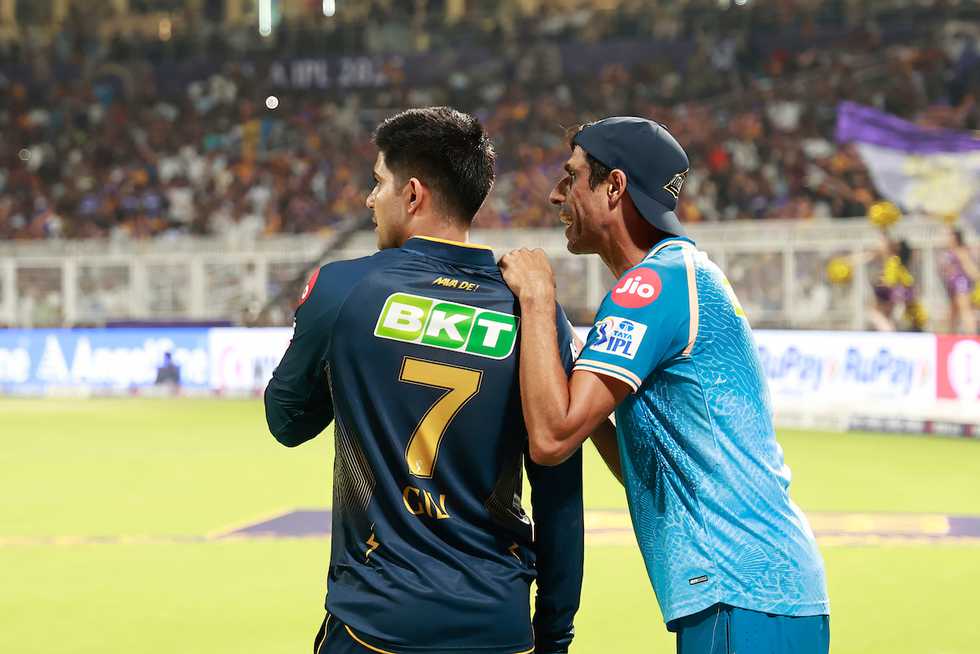

A little more than a month ago, RCB head coach Andy Flower took time to extoll the many virtues that made Rajat Patidar an ideal captaincy candidate for their coming season. Calmness, simplicity, empathy and steeliness were all mentioned as RCB confirmed the outcome of what must have been a tricky decision, given they had released a seasoned leader in Faf du Plessis before the IPL 2025 mega auction.
There had been two clear paths ahead of Flower and the RCB brains trust: get Virat Kohli to reprise a role he had performed 143 times in the league previously, or take a punt on 31-year-old Patidar, with all of 16 T20s to his name as captain. The move they settled on was ballsy in more ways than one. Patidar may have blazed a trail to the SMAT final with Madhya Pradesh, but stepping into the cauldron of IPL captaincy, especially at RCB, where frenzied fan expectation meets a legacy of heartbreak, is a test of fire few can truly grasp.
Given it was the start of a new cycle in the tournament, there were other teams in a similar decision-making space. Defending champions Kolkata Knight Riders, for example, went the other way. Patidar's state-mate Venkatesh Iyer, a big-money recruit, was considered but eventually named deputy to Ajinkya Rahane, a peer of Kohli's with a lot of leadership experience, in the IPL and international levels. And Rahane was still someone, who until the latest SMAT, might not have been assured a place in a T20 starting XII in 2025.
The two approaches speak to how teams view captaincy in T20 cricket, with RCB's decision perhaps reflecting a movement away from the traditional notion that you pick a captain and build a team around him. "There'll be other teams that will go: 'Yeah, right, we'll just go in and try and get the best squad we can possibly and then figure out who the best candidate is when you get to the end of that process,'" says Simon Katich, who has been part of squad-building exercises at KKR, SRH and RCB.
There is merit to this line of thought. If a captain has to be picked at a mega auction, then he automatically has had no role to play in the core of the squad being picked for him to lead in the cycle.
Muddying the waters of what a captain means in T20 cricket is the fact that there is no objective way to gauge his input and impact. A win-loss record, or titles won/lost do not provide a tell-all picture, since they don't take into account the strength of the team or the opposition, and leave both inordinate credit and criticism at the captain's door.
What's more, in the modern era of T20, his role could increasingly be diluted to pruning the squad to a playing XII, and maintaining intangibles like team ethos, culture and body language and going out for the coin toss. Because, at the high-end of T20 cricket like the IPL, even in-game plans are pre-decided, players are aware of their roles down to a 'T', and have become more and more responsible for themselves. It is true that everybody likes the idea of having that one boss to make the big calls at the big moments with whom the buck ultimately stops, but does that have to be the captain? It would seem like the time may have come when T20 teams can be run from just beyond the boundary where a coach has real-time and emotion-free data and information available to enable clear decision making.

Relaying that information within the constraints of time isn't an issue either. The IPL already offers two 'strategic time-outs' in an innings. For more real-time communication, there are coaches like Ashish Nehra, often spotted in Gujarat Titans' games prowling just beyond the boundary cushions, barking out instructions like a football manager.
In a conversation with Cricbuzz last year, Mike Hesson - a data-driven tactician and former IPL coach - warned against stripping captains of their autonomy, calling it a disservice and a disrespect of those trusted to make instinctive calls in high-pressure moments. He opined it would change the very ethos of cricket, which is afterall played by humans. His point holds weight; after all, coaches aren't out in the middle, and understanding the 'feel of the game' from within is often more crucial.
It is true that Hardik Pandya produced just the perfect wide slower-ball on a 6-to-8 metre-length to Heinrich Klaasen as had been discussed before last year's T20 World Cup final in Barbados, but even Rohit Sharma has since apportioned some credit for that pivotal moment to an act of gamesmanship from Rishabh Pant in the over break for disrupting the star batter's momentum. There is no data to measure such cause and effects.
But cricket captains haven't all shied away from leaning on tactical support. Hansie Cronje famously walked out to a World Cup game more than 25 years ago with a transmitter-receiver setup through which he could





